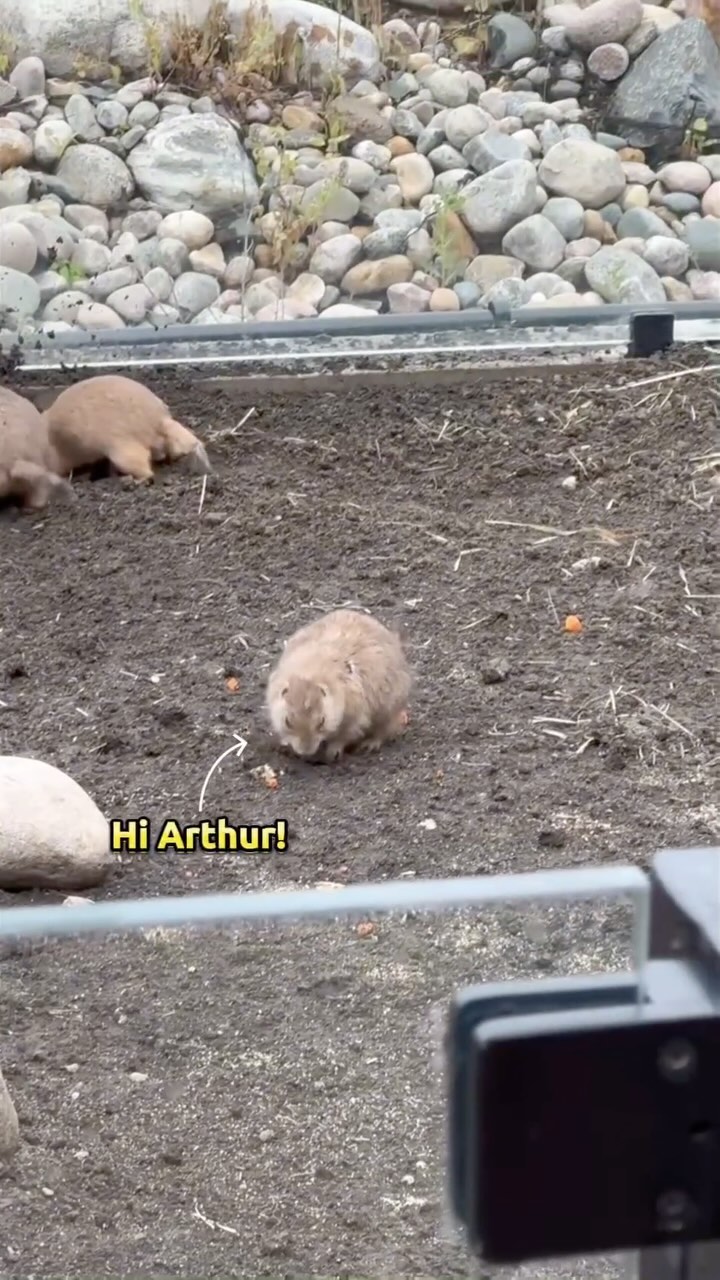- The significance of individualized care for zoo animals.
- Brittney’s role in animal welfare and her work with Arthur the Prairie Dog.
- The science and methodology behind personalized animal care at zoos.
- The impact of specialized care on animal behavior and well-being.
- Insights into the broader implications of individualized care for wildlife conservation.
In today’s increasingly informed and empathetic world, the notion of individualized care for zoo animals has become a cornerstone of modern zoo management practices. Each animal’s unique needs, whether dietary, medical, or environmental, are meticulously addressed to promote optimal health, well-being, and longevity. The following narrative delves into how zoos implement such personalized care, with a particular focus on Brittney’s dedicated work with Arthur, a Prairie Dog.
Brittney’s Role in Animal Welfare
Brittney’s commitment to animal welfare exemplifies the dedication zoo staff exhibit daily. As a member of the zoo’s animal husbandry team, she works closely with creatures both large and small. Her day-to-day responsibilities include monitoring health, ensuring proper nutrition, and enriching the lives of the animals under her care.
In the case of Arthur, the Prairie Dog, Brittney meticulously tailors his care regimen. Prairie Dogs, social creatures by nature, require environments that not only meet their physical needs but also cater to their social behaviors. Arthur benefits from this expertise through carefully structured interactions and a habitat designed to mimic his natural surroundings. Brittney’s approach involves regular health check-ups, a balanced diet, and environmental enrichment activities aimed at stimulating Arthur both mentally and physically.
The Science and Methodology Behind Personalized Care
At the core of individualized care in zoos lies a robust understanding of each species’ natural history and biology. Caregivers like Brittney employ a combination of ethology (the study of animal behavior) and veterinary science to create comprehensive care plans. These plans are dynamic, continually evolving with advancements in scientific knowledge and technology.
For instance, Arthur’s care involves detailed nutritional planning. Prairie Dogs have a diet primarily consisting of grasses and other vegetation. Brittney ensures that Arthur’s diet replicates this as closely as possible, providing a variety of fresh produce and specially formulated pellets to meet his dietary needs. Behavioral enrichment, another crucial aspect, might include tunnels to dig, soil to burrow, and objects to manipulate, thereby replicating the Prairie Dog’s natural habitat and behaviors.
The technology used in modern zoology further aids in personalizing animal care. Digital tracking devices, health monitoring systems, and in-depth data analysis enable caregivers to tailor care to an unprecedented degree. Veterinary technology plays a significant role, with advanced diagnostic tools helping in the early detection of illnesses and ongoing health assessments.
Impact of Specialized Care on Animal Behavior and Well-being
Individualized care has profoundly positive impacts on the behavior and overall well-being of zoo animals. When animals like Arthur receive care that suits their specific biological and psychological needs, they exhibit more natural behaviors and show signs of reduced stress. This enhanced state of well-being is observable through various indicators such as activity levels, social interactions, and overall health.
Arthur, for instance, flourishes under Brittney’s care. His behavior closely mirrors that of Prairie Dogs in the wild, thanks to the enriched, stimulating environment Brittney provides. This careful attention ensures Arthur remains mentally and physically active, fostering a state of well-being that contributes to his longevity and quality of life.
The well-documented reduction of stereotypical behaviors—repetitive, non-functional actions often seen in captive animals—is another significant benefit. These behaviors typically emerge from boredom or psychological stress. Individualized care, through environmental enrichment and social interaction, helps mitigate these adverse effects, promoting healthier, more content animals.
Broader Implications for Wildlife Conservation
The principles of individualized care extend beyond the confines of the zoo, informing broader wildlife conservation efforts. By understanding and meeting the intricate needs of animals in captivity, zoos contribute valuable knowledge that can be applied to conservation strategies in the wild.
For example, the detailed dietary and health information collected for animals like Arthur is instrumental when reintroducing species into their natural habitats. Zoos can provide crucial support for conservation programs, supplying data on nutritional requirements, behavioral needs, and medical treatment that can increase the success rates of reintroduction efforts.
The educational role of zoos, enhanced by the practice of individualized care, cannot be overstated. By showcasing the importance of personalized animal care, zoos raise public awareness about animal welfare and conservation issues. Visitors, seeing firsthand the dedication and science behind zoo animal care, are often inspired to support conservation efforts and advocate for wildlife protection.
In conclusion, the individualized care provided to each animal at the zoo, exemplified by Brittney’s work with Arthur the Prairie Dog, illustrates a commitment to excellence in animal welfare and conservation. This comprehensive approach, based on scientific principles and a deep understanding of each species, not only benefits the animals in question but also contributes significantly to global wildlife conservation efforts. By continuing to prioritize and innovate in the field of personalized animal care, zoos worldwide can ensure a brighter future for countless species.
*****
Source Description
Every animal at the zoo receives individualized care. Here’s Brittney talking about one of our Prairie Dogs, Arthur! 🐾
class=”instagram-media” data-instgrm-permalink=”https://www.instagram.com/reel/C-ffjUkOLUS/” data-instgrm-version=”14″ style=” background: border:0; border-radius:3px; box-shadow:0 0 1px 0 rgba(0,0,0,0.5),0 1px 10px 0 rgba(0,0,0,0.15); margin: 1px; max-width:540px; min-width:326px; padding:0; width:99.375%; width:-webkit-calc(100% – 2px); width:calc(100% – 2px);”>


